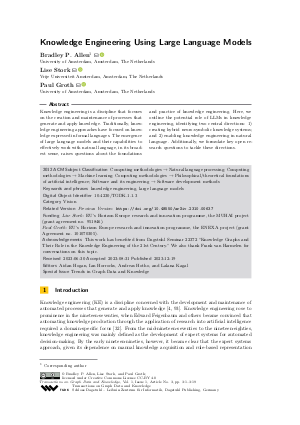@Article{allen_et_al:TGDK.1.1.3,
author = {Allen, Bradley P. and Stork, Lise and Groth, Paul},
title = {{Knowledge Engineering Using Large Language Models}},
journal = {Transactions on Graph Data and Knowledge},
pages = {3:1--3:19},
ISSN = {2942-7517},
year = {2023},
volume = {1},
number = {1},
publisher = {Schloss Dagstuhl -- Leibniz-Zentrum f{\"u}r Informatik},
address = {Dagstuhl, Germany},
URL = {https://drops.dagstuhl.de/entities/document/10.4230/TGDK.1.1.3},
URN = {urn:nbn:de:0030-drops-194777},
doi = {10.4230/TGDK.1.1.3},
annote = {Keywords: knowledge engineering, large language models}
}

 Creative Commons Attribution 4.0 International license
Creative Commons Attribution 4.0 International license









